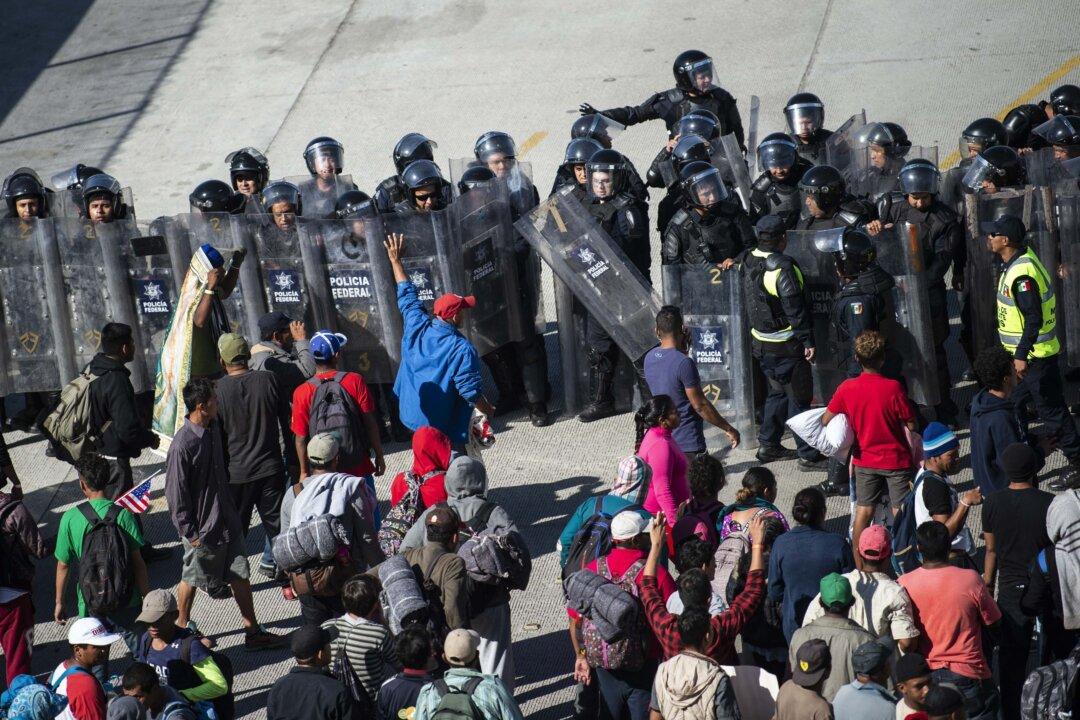A caravan of Central American migrants attempted to force its way into the United States on Nov. 25 at the San Ysidro border crossing from Tijuana, Mexico.
Some 2,000 migrants participated, a Mexican federal police officer said, while 39 migrants were arrested for causing fights and disturbing public peace, according to a Mexican police spokesperson. No injuries were reported. Several U.S. Customs and Border Protection (CBP) agents were hit by projectiles, the agency said on Twitter.





